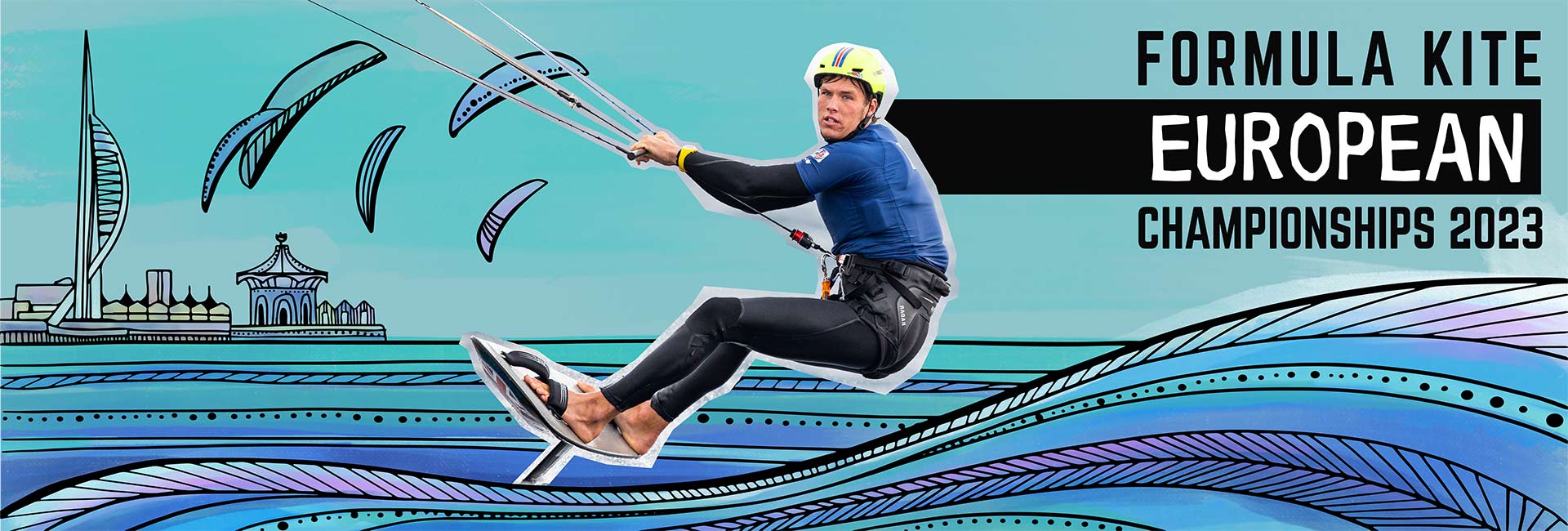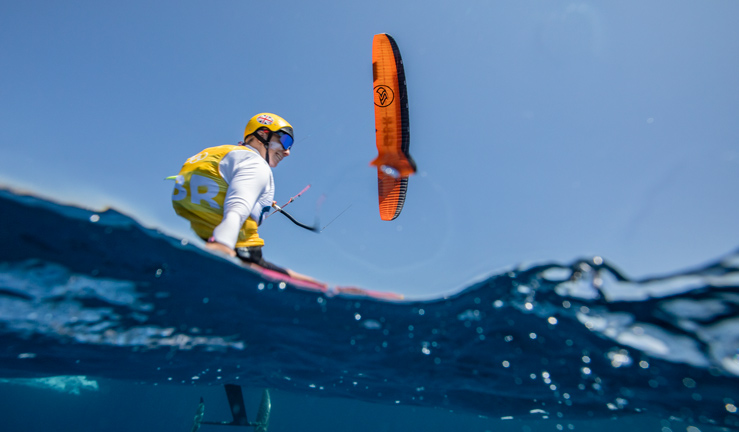
Kite foiling explained
From the kit to the racing, here's everything you need to know about the new Olympic discipline...

Kite foiling is one of the two new sailing disciplines which debuted at the Paris 2024 Olympic Games. During the games, the formula kite class was a gripping and fast paced watch, offering plenty of thrills for spectators.
After fierce competition, history was made by Britain’s Ellie Aldridge who became the first women’s kite Olympic champion, claiming Team GB’s 50th medal of the games.
We spoke to some of the British Sailing Team’s highest-flying riders to find out more about how you can follow in their footsteps and take your first flight. Here’s everything you need to know…

What is kite foiling?
Kite foiling sees riders ‘fly’ above the water on hydrofoils attached to boards and powered by huge kites. They can reach incredible speeds of up to 45 knots (51 mph).
The hydrofoil is a wing-like structure mounted beneath the board that lifts it above the water’s surface as the rider gains speed. This allows you to glide smoothly through the water, even in light wind conditions, with reduced drag and increased speed.
The sensation of kite foiling is often described as taking flight over the water. This is owed to the board itself remaining above the surface, while the hydrofoil cuts through the current below.
What kit do you need?
To learn how to kite foil all the essentials you need are a kite, a board, and a foil.
Unlike yachts and powerboats, with kite foiling you’re closer to the water and likely to experience more of a splash. Therefore, it’s important to make sure you’re fitted with the right lifejacket or buoyancy aid, dressed for the water, and prepared to get wet, especially at the start.
The board, the foil and the kite
Kite foiling boards are just over a metre long and feature both a foil on the underside and foot straps on the top. The hydrofoils are comprised of a mast and two wings, the front wing provides lift, and the back wing (or stabiliser) provides stability against the current.
Riders are powered by large kites attached with a harness and controlled with a hand bar. Each rider will have a selection of four kites of different sizes that can be changed based on the wind strength and conditions.
How does racing work?
Each regatta lasts around one week with riders racing set courses. Three qualifier days are usually followed by two days of silver and gold fleet racing. The top ten riders then go through to the final series.
Racing is fast and exciting, with the average race lasting just 12 minutes.
Finding a course
Before progressing to kite foiling, a good foundation of experience with other boardsports is beneficial. To get you started the RYA offers windsurfing and winging courses for adults, children and young people.
Each of these courses aim to encourage people of all skillsets and backgrounds to get on the water. Courses are held with an instructor that’s trained to give you just the right amount of background theory for each stage of your progression.
Once you’ve mastered the basics of winging, you can progress to foiling or racing, adding another exciting element for watersports enthusiasts.
If you want to get started in kite surfing or foiling the British Kitesurfing Association (BKSA) is the national governing body for kite sports in the UK. To help you kick start your kite foiling journey, the BKSA offers courses at over 30 British Kite sport recognised schools across the UK.
Did you know...
As an RYA member you can take advantage of free third-party liability insurance for kite surfing and wingsurfing. Simply update your boating interests to activate your cover. T&Cs apply.
Not a member? Join today to enjoy this and other exclusive benefits.
